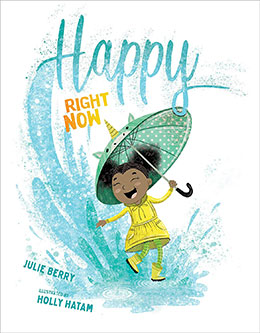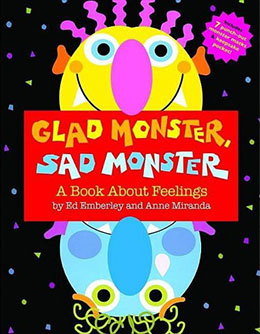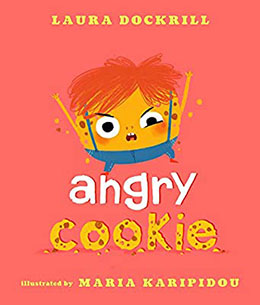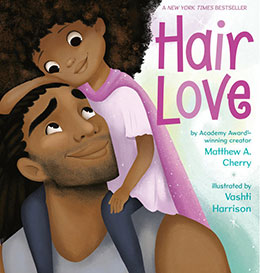I live and work in a train community and often use trains as an analogy when I talk about storytime. Like a train, storytime offers an audience a chance to hop on board to experience a new world with characters. The characters of a story can help us understand some of the experiences the children listening to the story might be going through. By being empathetic toward children, we support their social-emotional wellbeing (SEL). For my article this month, you will learn how to develop social-emotional storytimes, find a recommended list of books and activities, and bookmark the availability of online SEL resources.
Developing a Social-Emotional Storytime
 A social-emotional storytime offers a landscape to help families build positive relationships by developing social skills, to show empathy for others, to develop communication skills, and the opportunity for children to express how they are feeling. You do not need to develop a new library program that targets social-emotional wellbeing. Instead, evaluate your current storytime program(s) and look for ways to include SEL stories and activities.
A social-emotional storytime offers a landscape to help families build positive relationships by developing social skills, to show empathy for others, to develop communication skills, and the opportunity for children to express how they are feeling. You do not need to develop a new library program that targets social-emotional wellbeing. Instead, evaluate your current storytime program(s) and look for ways to include SEL stories and activities.
For myself, focusing on character experiences are important. Character experiences can include situations they face similar to what families might be facing – or talking about the emotions they are expressing. When evaluating activities, reflect on routine activities you do at each program such as singing a specific song or asking certain questions before starting the story. Ask yourself the following:
- How do I update these activities to help children express their emotions?
- How can I update them to develop social skills?
- How can I update them to encourage relationship building?
What about a virtual SEL program? Although COVID-19 continues to bring challenges in both our personal and professional lives, including SEL activities virtually can help families through these challenges. The key is to sprinkle SEL messages and/or demonstrate activities throughout the program. The following are my recommended SEL books and activities.
Books to Promote SEL
 Crocodiles Need Kisses Too by Rebecca Colby
Crocodiles Need Kisses Too by Rebecca Colby- The Pout, Pout Fish by Deborah Diesen
- Glad Monster, Sad Monster by Ed Emberley
- Mouse was Mad by Linda Urban
- Let’s Sing a Lullaby with the Brave Little Cowboy by Jan Thomas
- The Hug Machine by Scott Campbell
- Angry Cookie by Laura Dockrill
- The Kindness Book by Todd Parr
- Nobody Hugs a Cactus by Carter Goodrich
- I Will be Fierce by Bea Birdsong
- Happy Right Now by Julie Berry
 My Love is For You by Susan Musgrave
My Love is For You by Susan Musgrave- Superbuns! by Diane Kredensor
- I am Love by Susan Verde
- One More Hug by Megan Alexander
- Don’t Call Me Bear! by Aaron Blabey
- Hair Love by Matthew A. Cherry
- Ruby Finds a Worry by Tom Percival
- We Are (Not) Friends by Anna Kang
- The Happy Book by Andy Rush
SEL Activities to Consider
 The following are three great SEL activities I use and recommend using in storytime. These activities can be used in virtual programming.
The following are three great SEL activities I use and recommend using in storytime. These activities can be used in virtual programming.
Activity 1: Emoji Card: You can create an emoji card by either drawing emoji faces or gluing the faces to a wooden craft stick. The emoji faces should express common emotional expressions (i.e. happy, sad, mad, etc.). At the start of your program, pull out the card and tell families you will close your eyes and then point to an emoji. Open your eyes and show them the emoji emotion you chose. Ask them if they know what that face means and to try to make that face. This is a great activity to introduce the different emotions and to provide a safe space for them to express how they feel. For an online program, you can offer this as a live activity where families interact through video or you can use the chat box for them to respond. If you record your storytime, encourage families to write a comment to the posted recording.
 Activity 2: Planting the Positivity Seed: It is important to have positive self-talk. It is equally important to share something positive about others. For this activity, adapt this positive self-talk flower template to a positive friendship flower. Post the flower up so families can see. During storytime, write a positive comment about each child and share what you wrote down with them. Tell families that you are growing flowers of positivity. Alternately, you can have families tell something positive about the characters in the stories you read. For an online program, you can offer this as a live activity where families interact through video or you can use the chat box for them to respond. If you record your storytime, encourage families to write a comment to the posted recording. Take a photo of the flower, upload it to Zoom, and use it as a background.
Activity 2: Planting the Positivity Seed: It is important to have positive self-talk. It is equally important to share something positive about others. For this activity, adapt this positive self-talk flower template to a positive friendship flower. Post the flower up so families can see. During storytime, write a positive comment about each child and share what you wrote down with them. Tell families that you are growing flowers of positivity. Alternately, you can have families tell something positive about the characters in the stories you read. For an online program, you can offer this as a live activity where families interact through video or you can use the chat box for them to respond. If you record your storytime, encourage families to write a comment to the posted recording. Take a photo of the flower, upload it to Zoom, and use it as a background.
 Activity 3: The Empathy Lens: For this activity, choose one of the books you will read and complete a character reflection. In my experience, a character reflection is an opportunity to reflect on the experiences a character or characters face in the story and connect those experiences to what families in storytime might be facing. The goal in storytime is to project an image of the character, to ask children if they have experienced something like the character, and to think about one or two words to describe the experience. Write down the word and post it beside the image of the character. After a few storytimes, you will have a collage of characters and words associated to their experiences. For an online program, you can offer this as a live activity where families interact through video or you can use the chat box for them to respond. If you record your storytime, encourage families to write a comment to the posted recording.
Activity 3: The Empathy Lens: For this activity, choose one of the books you will read and complete a character reflection. In my experience, a character reflection is an opportunity to reflect on the experiences a character or characters face in the story and connect those experiences to what families in storytime might be facing. The goal in storytime is to project an image of the character, to ask children if they have experienced something like the character, and to think about one or two words to describe the experience. Write down the word and post it beside the image of the character. After a few storytimes, you will have a collage of characters and words associated to their experiences. For an online program, you can offer this as a live activity where families interact through video or you can use the chat box for them to respond. If you record your storytime, encourage families to write a comment to the posted recording.
SEL Resources
